Disclaimer: This piece was authored by Caroline Freedman. While we are sharing it, it does not constitute official guidance from Scoliosis Support & Research. We strongly advise readers to consult a qualified healthcare professional before making any modifications to their exercise routine.
—
Exercising & Scoliosis Without a Spinal Fusion – An article by Caroline Freedman
One of the most common questions I receive about scoliosis is whether exercise is safe. The answer is yes! Regular exercise helps stretch and strengthen the muscles around your spine, improving posture and overall well-being.
If you have scoliosis but have not had surgery, there are very few exercises or activities you need to avoid. However, it’s essential to follow the recommendations of your consultant, physiotherapist, and your own body to determine what feels comfortable for you.
The exercises I recommend for post-surgery recovery are also excellent for strengthening your body while living with scoliosis, regardless of whether you have had surgery. Depending on your age and fitness level, exercises can be adapted, and I will include those in a follow-up article for both those with and without a spinal fusion, as well as those who are not planning to have surgery.
For my older clients, some of whom are over 80, I use chair-based strengthening exercises, depending on their ability. For example, one client in her 70s, who has not had surgery, initially came to me in a lot of pain. She has found that gentle, adapted exercises with low weights have helped her, and she now avoids certain movements that previously irritated her back.
From my own experience—having undergone three spinal surgeries—and from training clients with scoliosis, both with and without surgery, I have learned which exercises may be uncomfortable. Through discussions with my clients over the years, we have identified movements to avoid in my classes to ensure a safe and effective workout.
Everyone’s experience is different. You might find that an exercise that works well for you is uncomfortable for someone else with scoliosis, and vice versa. The general rule for any exercise program is simple: if it hurts, stop or adjust your position.
While exercise won’t prevent scoliosis, it can significantly help with pain, posture, strength, stamina, and overall well-being.
Many children and adults with scoliosis experience pain at some point. A common complaint is a pulling sensation across the ribs where the muscles stretch over the rib hump. I felt this before my first surgery, and many of my clients with scoliosis have described the same sensation. From both personal experience and professional opinion, I strongly believe exercise can help manage pain. My clients frequently report a noticeable decrease in their pain levels with regular, mindful exercise.
If surgery is necessary, my consultant advised me to strengthen my body as much as possible beforehand. I incorporated free weights, resistance machines, and body-weight exercises into my routine, along with a variety of fitness classes. Research shows that being fit before surgery can lead to a quicker recovery.
Tips for Exercising with Scoliosis
- Avoid any exercise that forces your body further out of alignment.
- Be careful when performing abdominal exercises; keep your legs elevated to reduce pressure on your spine.
- Use support if lying flat is uncomfortable—try a small cushion, wedge, or soft hoodie.
- Lift wisely—if you can’t complete six reps with perfect form, the weight is too heavy. Increase weight only when you can comfortably perform three sets of 20 reps.
Exercises to Avoid in the Gym
- Shoulder Press (Machine or Free Weights) ✖
A huge NO for anyone with scoliosis! Shoulder presses require symmetrical movement, which is difficult for people with scoliosis due to uneven shoulders. Forcing symmetry can push the back further out of alignment, leading to discomfort and potential injury.

- Leg Press Machine ✖
This exercise compresses the spine as both legs extend, which can place excessive strain on an uneven spine. Even when performed with alternate legs, heavy weights may misalign the hips.
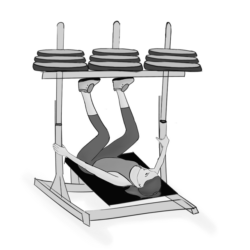
Exercising with a Spinal Fusion
Don’t worry—there are plenty of exercises you can still do while being mindful of your body’s limitations. Over the coming months, I’ll share recommended post-surgery exercises that are both safe and effective.
Exercises to Avoid After Spinal Fusion Surgery
- Back Bends ✖
Never attempt these—there are no safe alternatives. Back bends, common in yoga and gymnastics, place extreme strain on the fused spine. I learned this the hard way—one of my Harrington rods snapped due to a back bend.
- Shoulder Stand ✖
This movement curves the spine and puts excessive pressure on the metalwork and fusion points. There are no benefits, only risks.
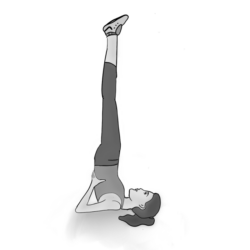
- Full Neck Rolls ✖
Absolutely avoid these! They put too much stress on the top thoracic vertebra (T1) and can lead to disc damage. Neck rolls are considered unsafe even for those without spinal conditions. If a class instructor demonstrates these, walk out!
Abdominal Exercises to Avoid
- Sit-Ups ✖
Sit-ups aren’t great for anyone, as they can strain the lower back and hip flexors. Never perform an abdominal exercise without supporting your head.
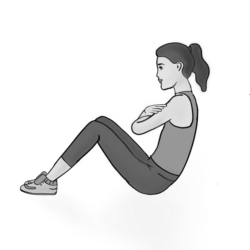
- Low Leg Lifts from the Floor ✖
These place too much stress on the lower back, increasing the risk of spinal arching and vertebral damage.
- Twisting Rotational Movements (e.g., Russian Twists) ✖
Post-surgery, the spine lacks a natural bending curve, meaning that excessive rotation places immense pressure on the remaining moveable vertebrae. Over time, this can lead to premature wear and tear, potentially requiring additional surgeries.
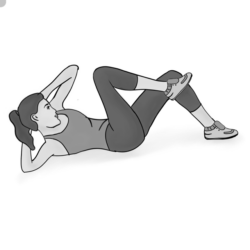
- Other Abdominal Exercises to Avoid:
- Diagonal crunches
- Twisting or rotating exercises
- Bicycle crunches
- Crunches without head support
- Weighted abdominal exercises
- Arching the spine
Other Gym Machines & Exercises to Avoid
- Waist Rotation Machine ✖
Fusion limits spinal rotation, so swinging from side to side on this machine can be harmful. There are better ways to engage the obliques safely.
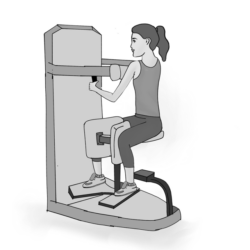
- Kneeling Abdominal Pulldowns ✖
A flexible spine is required for this exercise, which is not possible after fusion.
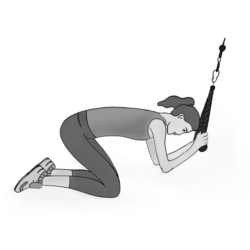
- Weighted Abdominal Machine ✖
The added resistance places unnecessary pressure on the trunk and is not needed for effective core training.
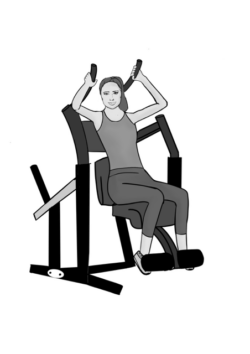
- Machine Deltoid Raises (“Elbow Raises”) ✖
These exercises put too much strain on the shoulders and can be particularly painful after surgery.
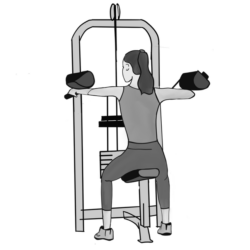
- Back Extension Machine ✖
This machine mimics improper lifting form and can strain spinal muscles. I avoid it completely.
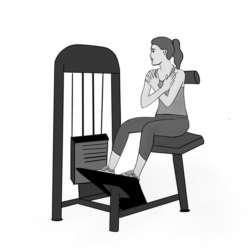
- Lying-Down Leg Curl Machine ✖
This machine exercises the hamstrings but often places excessive pressure on the lower back. A seated leg curl at a low weight is a safer alternative.

- Glute Machine ✖
This machine strains the lower back unnecessarily—better alternatives exist for working the glutes safely.

Coming Next Month!
Starting Back to Exercise After a Spinal Fusion – Safe & Effective Methods
By being mindful of these exercises, you can continue to stay active and strong while protecting your spine. Always listen to your body and consult a physiotherapist or specialist if you are unsure about any movements. Stay tuned for more guidance on safe and effective post-surgery workouts!
About the Author
Caroline Freedman is a certified Personal Trainer and TRX Sports Medicine Suspension Training exercise professional.
She is the author of The Scoliosis Handbook of Safe and Effective Exercises Pre and Post Surgery.
Caroline is passionate about educating others on safe and effective exercise for scoliosis. Through her book, The Scoliosis Handbook, and the Scoliosis and Spinal Fusion CPD Course, she provides valuable guidance for both professionals and individuals. As the only UK-endorsed course of its kind by CIMSPA and YMCA FIT, her work continues to support those looking to exercise safely with scoliosis. Learn more at https://directory.cimspa.co.uk/scoliosis-and-spinal-fusion/scoliosis-and-spinal-fusion/
Find out more at: www.scoliosishandbook.com
Follow on Instagram: @scoliosishandbook




